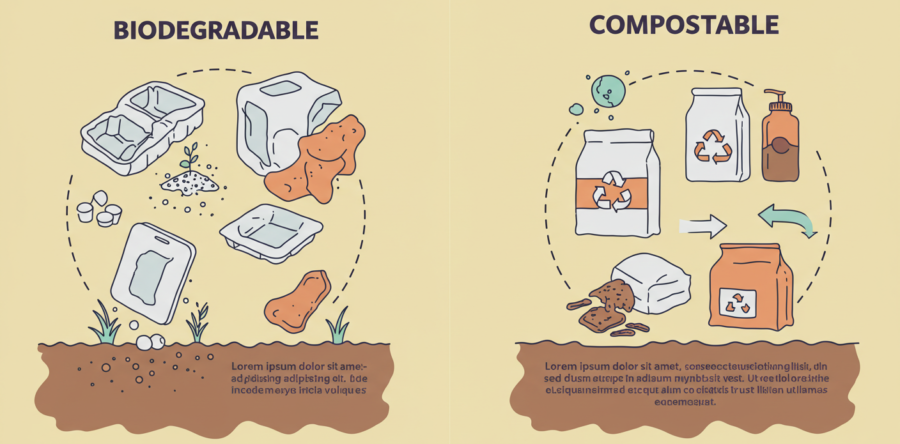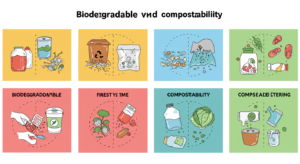Biodegradable vs. Compostable Packaging

In the contemporary environmentally aware society, the terms "biodegradable" and "compostable" are commonly employed, particularly regarding packaging materials. Although both terms imply a degree of environmental responsibility, they are not synonymous.
Recognizing the differences between biodegradable and compostable packaging is essential for making informed decisions that truly contribute to environmental sustainability.

Defining Biodegradable Packaging
Biodegradable packaging refers to materials that can be broken down by microorganisms such as bacteria, fungi, and algae into natural elements like water, carbon dioxide, and biomass. However, the term "biodegradable" is broad and doesn't specify the time frame or conditions required for this decomposition. Some biodegradable materials may take years to break down, and during this prolonged process, they could release harmful substances into the environment. Therefore, while all compostable items are biodegradable, not all are compostable. (bpiworld.org)
Understanding Compostable Packaging
Compostable packaging is designed to decompose under specific conditions into nutrient-rich compost without leaving toxic residues. This decomposition typically occurs within a defined time frame and requires certain environmental conditions, such as those found in industrial composting facilities. Compostable materials can be made from either bio-based or petrochemical inputs. (ellenmacarthurfoundation.org)
Key Differences Between Biodegradable and Compostable Packaging
- Decomposition Time Frame: Compostable materials are tested to ensure they break down within a specific period, usually within 90 days in industrial composting facilities. In contrast, biodegradable materials lack a defined time frame for decomposition, meaning they could persist in the environment for extended periods.
- Environmental Impact: Compostable packaging is designed to decompose without leaving harmful residues, enriching the soil as compost. Biodegradable packaging, however, may leave behind microplastics or other pollutants if not properly managed.
- Decomposition Conditions: Compostable materials require specific conditions, such as elevated temperatures and controlled humidity, typically found in industrial composting facilities. Biodegradable materials may decompose under natural conditions, but often at a much slower rate.
Challenges and Considerations
While compostable packaging offers environmental benefits, it also presents challenges. For instance, the lack of standardized labelling can lead to confusion among consumers, resulting in improper disposal and contamination of recycling streams. In Australia, leading waste companies have called for clearer labeling to combat significant plastic contamination in organic waste collections. (theguardian.com)
Moreover, the availability of industrial composting facilities is limited in many regions, making it difficult for compostable packaging to break down as intended. This limitation underscores the importance of developing infrastructure to support composting and educating consumers on proper disposal methods.
Making Informed Choices
When choosing between biodegradable and compostable packaging, consider the following:
- Certification: Look for packaging that has undergone strict testing to ensure it meets compostability standards. Certified compostable products are designed to break down within a specific time frame and do not release harmful substances into the environment. (elevatepackaging.com)
- Disposal Options: Ensure that you have access to appropriate disposal facilities. Compostable packaging is most effective when disposed of in industrial composting facilities that provide the necessary conditions for rapid decomposition.
- Environmental Impact: Consider the entire lifecycle of the packaging, including production, use, and disposal. Compostable packaging can contribute to a circular economy by returning valuable nutrients to the soil when properly composted.
Conclusion
Recognizing the distinctions between biodegradable and compostable packaging is crucial for making environmentally conscious decisions. Compostable packaging, when properly managed, provides a more reliable and advantageous decomposition process, despite both options striving to minimize environmental impact.
Choosing certified compostable packaging and committing to its appropriate disposal allows consumers and businesses to significantly contribute to fostering a more sustainable future.




